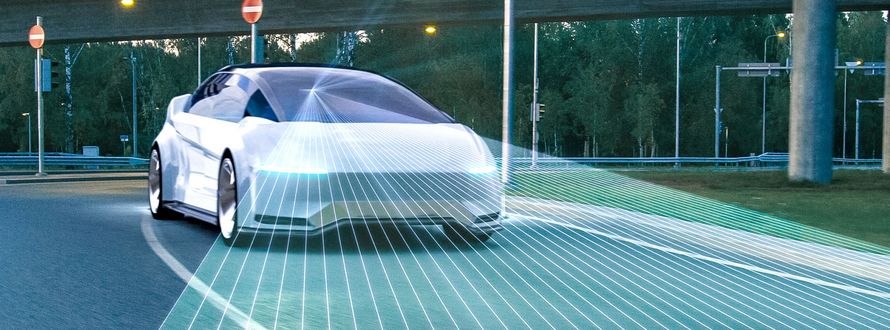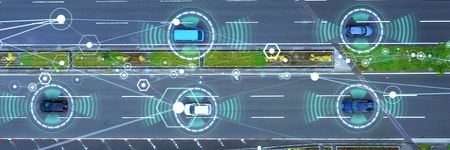
Staying on Track: The Power of Lane Departure Warning Systems
– Automotive, SafetyLane-keeping assistants and lateral guidance systems are integral components of modern vehicle safety technology. Lane-keeping assistants use sensors and in-built cameras to monitor a vehicle's position within its lane. When the car approaches the lane boundary, the system intervenes by applying targeted brakes or steering inputs to guide the vehicle back on course. This technology not only prevents unintentional lane departures but also enhances overall road safety by reducing the risk of collisions resulting from drifting out of the designated lane.
Complementing this, lateral guidance systems extend the safety net by actively stabilizing the vehicle during maneuvers. These systems monitor lateral movements and apply precise brake interventions to counteract swaying or skidding, especially in emergency situations. Together, these technologies contribute significantly to accident prevention, providing drivers with crucial assistance in maintaining proper lane discipline and overall control of their vehicles.
Lane Departure Warning and other Supporting Systems
We continue our tour with the diverse features of lane warning systems and other driver assistance technologies:
Electronic Stability Program (ESP)
The Electronic Stability Program utilizes Anti-lock braking System (ABS) sensors on the wheels to detect unusual deviations in wheel speeds, indicating a potential skid. Through targeted, wheel-specific brake interventions, the system aims to stabilize the vehicle's trajectory and prevent it from skidding. Advanced systems also respond to yaw and sway behavior when towing trailers.
Skidding incidents often result in severe accidents, especially when involving other road users or obstacles in the vicinity. While ESP cannot defy physics, it can prevent the vehicle from sliding sideways into an obstacle or another car, which typically leads to more severe injuries than a head-on collision at the same speed. ESP is a crucial assistance system significantly contributing to reducing accidents with severe injuries and fatalities.
Other terms would be Electronic Stability Control (ESC) or Dynamic Stability Control (DSC)
Traction Control System (TCS)
The Traction Control System monitors the rotational speeds of the wheels to identify slipping or spinning of driven wheels. By selectively braking the affected wheel, it prevents slipping and directs more power to the non-slipping wheel through the differential.
Slipping of a driving wheel can cause the vehicle to deviate from its lane and spin out of control. For rear-wheel-drive vehicles, the rear may slide sideways, while front-wheel-drive vehicles with one-sided slippage may experience high steering forces, leading to a departure from the lane. In both cases, accidents can be avoided through the intervention of the TCS.
Blind Spot Assist
The vehicle's side mirrors cannot cover all blind spots. Sensors in the mirrors and/or at the corners of the vehicle monitor areas beside the vehicle with rearward offset, alerting the driver when another vehicle is present.
During overtaking or lane-changing maneuvers, overlooking a vehicle diagonally behind one's own vehicle can lead to severe accidents. In cases of minimal overlap, both vehicles may be forced out of the lane, potentially resulting in a skid. This is particularly risky at higher speeds and may involve other road users.
Other terms would be Rear Cross Traffic Alert, Lane Change Warning, Blind Spot Indication System (BLIS)
Lane Keeping Assist (LKA)
The Lane Keeping Assist system monitors the vehicle's position within the lane. If the car approaches the lane boundary, the system automatically steers the vehicle away from the lane or roadway—either through one-sided brake interventions or steering impulses. Initially designed to recognize lane markings, modern systems typically respond to both marked and unmarked road boundaries. The system can additionally avert acute danger, such as veering into oncoming traffic or running off the road.
The steering forces exerted by the assistant are limited, allowing the driver to counteract by steering more forcefully against the assistant. Activating the turn signal temporarily deactivates the LKA to facilitate lane changes. Departing from the lane or roadway poses a high risk of accidents, often with severe consequences. Therefore, the LKA significantly contributes to road safety and the reduction of severe injuries and fatalities.
Other terms would be Lane Support System or Emergency Lane Keeping (ELK)
Lane Departure Warning System (LDWS)
The Lane Departure Warning System monitors the vehicle's lane-keeping, often with built-in cameras that can scan and interprid the road and road signs. If the car approaches the lane boundary, the driver is warned visually through a display, audibly through buzzing/beeping, or haptically through vibrations in the steering wheel or seat. Departing from the lane or roadway poses a high risk of accidents, often with severe consequences, such as entering oncoming traffic or colliding with obstacles near the road. Therefore, the LDWS contributes massively to road and passenger safety.
Lane Change Assist
To support lane changes, the Lane Change Assist system monitors the traffic behind the vehicle on the highway. It recognizes the desire to change lanes (turn signal activation, crossing the lane boundary) and warns the driver of potential collisions. Active systems can steer the vehicle back to prevent an accident.
The Lane Change Assist ensures the safety of overtaking maneuvers and contributes to overall road safety. Since these assistance systems observe the surrounding differently than humans, poorly illuminated or hard-to-detect vehicles (such as motorcycles) can be recognized. But with support and in cooperation with sensor systems even those conditions can be handled and lead to increased vehicle safety.
Trailer Stability Assist (TSA)
The Trailer Stability Assist system monitors swaying movements of the trailer during travel. If the trailer starts swaying, the system intervenes by applying targeted brake forces to the towing vehicle, preventing the sway motion.
Trailer sway can occur suddenly, and the assistant can be instrumental in stabilizing the trailer. Swaying movements often lead to serious accidents if not counteracted by prompt driver reactions or, alternatively, the assistance system. The TSA significantly contributes to road safety. Typically, the root cause of swaying in trailers with central axle trailers is an unfavorable weight distribution. Utilizing the maximum support load and placing heavy items near the trailer axle minimizes swaying movements.
Other terms would be Trailer Stability Program, Trailer ESP, Trailer Stability Assist (TSA)
How can SYSGO help?
SYSGO is an expert for embedded systems and can contribute to the mentioned systems through the development and integration of advanced software solutions:
Integration of Real-Time Operating Systems (RTOS): SYSGO provides real-time operating systems that can be used in these Advanced Driver Assistance Systems (ADAS) to ensure precise and timely execution of critical tasks. Also, our systems are optimized to handle the fast-paced and safety-critical nature of automotive systems, ensuring reliable performance (also for multi-core applications).
Hypervisor for Virtualization: A hypervisor in automotive systems allows for the virtualization of resources, enabling the simultaneous operation of multiple guest operating systems (such as Android, Linux or AGL) or guest partitions on a single hardware platform.
Safety-Critical Software Development: SYSGO contributes to the development of safety-critical software components, ensuring that the software meets the highest safety standards required for automotive applications. This involves compliance with industry standards such as ISO 26262 for functional safety in automotive.
Isolation and Security: By employing a hypervisor, we can ensure a high level of isolation between different software components or OS instances running within the vehicle's electronic control units (ECUs). This isolation enhances security by preventing potential vulnerabilities in one partition from affecting others.
Cybersecurity Solutions: Given the increasing connectivity in modern vehicles, SYSGO contributes to cybersecurity solutions to protect automotive systems from potential cyber threats. This involves developing secure communication protocols and implementing measures to prevent unauthorized access.
Middleware and Communication Protocols: We offer middleware solutions to facilitate communication between different components within the vehicle's ECUs or between vehicles and infrastructure. Implementing robust communication protocols is essential for the seamless functioning of systems like lane departure warning, traction control, and stability control.
Hardware Integration and Energy Optimization: SYSGO collaborates with hardware manufacturers to optimize the integration of our systems with specific automotive hardware platforms. This optimization enhances the overall performance and efficiency of the embedded systems and applications.
Flexibility and Upgradability: Our solutions contribute to the flexibility of automotive systems, allowing for easy addition of new features or the integration of updated software components without disrupting the overall system. This adaptability is crucial for keeping up with the evolving demands of the automotive industry.
SACoP - Secure Automotive Connectivity Platform
SACoP presents a turnkey-ready development platform and secure gateway for automotive connectivity, addressing the dynamic landscape of frequent model changes and functionality updates in the automotive industry. It emphasizes deterministic response times crucial for external communication through its real-time operating system, ensuring the safety and security of critical vehicle systems.
The platform integrates a gateway with robust routing, a firewall, and intrusion detection, enhancing vehicle safety while safeguarding against unauthorized access. Virtualization enables seamless incorporation of new features, maintaining software stability despite evolving user demands. PikeOS, chosen as the backbone, excels in determinism, real-time capabilities, security, safety, and virtualization, ensuring optimal performance through its Type 1 hypervisor and multi-core support. SACoP's architecture exemplifies secure inter-partition communication, emphasizing network security and the platform's adaptability to diverse connectivity needs.
More information at www.sysgo.com/sacop
---
More information at www.sysgo.com/pikeos
More information at www.sysgo.com/elinos
-
Previous
-
Next

 Twitter
Twitter LinkedIn
LinkedIn Facebook
Facebook Reddit
Reddit RSS
RSS Copy link
Copy link
